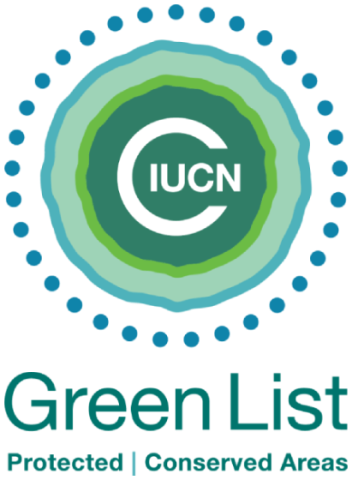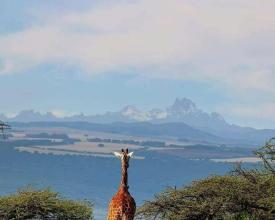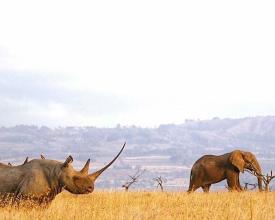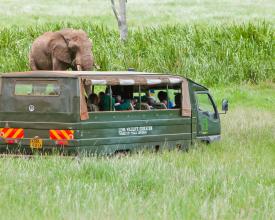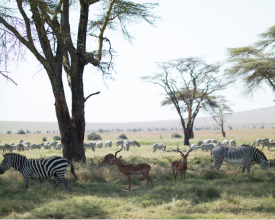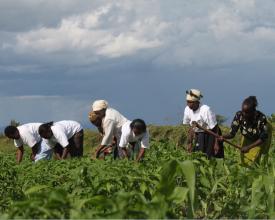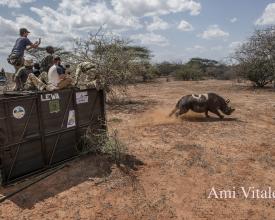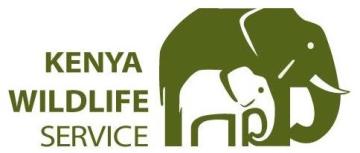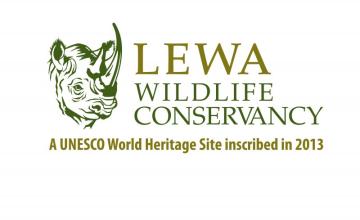
Lewa, from a Rhino Sanctuary to a Renowned Conservancy: Conservation for People and Wildlife
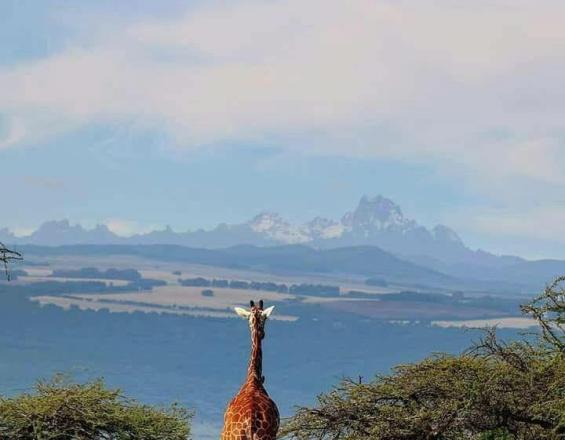
Endangered species, particularly rhinos, continue to face pressure from poaching and loss of habitat across the continent. The Lewa Wildlife Conservancy's solution to these challenges is to adopt a community-centric conservation model that recognises that conservation efforts can only be successful and long-term if the local people are involved, participate and derive value that supports their day to day livelihoods. Over the years, Lewa has used conservation as a platform to protect and grow populations of endangered and threatened wildlife species, carry out research and monitoring programmes, promote a safer landscape by providing security for both people and wildlife, initiate and support livelihood programmes, run low-impact tourism, and catalyse conservation across northern Kenya. As a result of its successes, Lewa has become one of the learning grounds of integrated private-community conservation practices, and how conservation can benefit both people and wildlife.
Contexte
Challenges addressed
Our solution addresses challenges that face people and wildlife across northern Kenya. These include:
Environmental
- Poaching of rhino and elephant – While poaching has reduced in Kenya in the last few years, the threat to these iconic species remains.
- Wildlife habitat fragmentation and loss, primarily due to rapid human development.
- Human-wildlife conflict remains a significant challenge, especially in the face of diminishing natural resources available for both people and wildlife.
- Lack of sufficient awareness on conservation opportunities, especially for communities who share their land with wildlife.
Social
- Poverty - Lewa's neighbouring communities have minimal opportunities for economic empowerment.
- Low levels of formal education across our neighbouring communities and northern Kenya.
- Land degradation, which poses a threat to pastoral livelihoods.
- Insufficient access to primary healthcare.
- Lack of adequate water supply in arid areas.
Emplacement
Traiter
Summary of the process
- Through consultation with the board of directors, government agencies such as the Kenya Wildlife Service and Kenya Forest Service, other conservation partners and communities, Lewa sets its conservation priorities and objectives, which are directly linked to the national goals for threatened species conservation and community livelihoood development.
- The communities, through their development committees and in partnership with the Lewa Community Development team, set their development priorities, which are aligned to the local governments' livelihood plans and those of Lewa.
- The Lewa team, with all stakeholders involved, defines and creates the organisation's 5-year strategic plan, aligned to the organisation's philosophy of community-centric conservation, and its role as a catalyst and model for conservation.
- Through the various departments, Lewa implements its goals as laid out in the Strategic Plan.
- Partners, whether they are conservation, government, communities, researchers, philanthropic etc are extremely critical and they each have a role to play in assisting in the implementation of Lewa's Strategic Plan.
Building Blocks
Community-focused Conservation Approach
We work with local communities to make our conservation efforts inclusive, participatory and beneficial to their livelihoods. This is in recognition that conservation can only be successful and sustainable if there is participation from the local people, where their views and thoughts are integrated into the planning and execution process.
Each community surrounding Lewa has a development committee that is linked to the community development programme here on Lewa. Through these committees, we are able to establish what the communities' greatest needs are, how we can help to best address them, and how conservation can generally uplift their livelihoods. As a result, we continue to enjoy a close working relationship with our neighbours, in recognition that the future for both people and wildlife in this ecosystem are intertwined.
Enabling factors
Regular and prompt communications between Lewa and the neighbouring communities, including an open door policy.
Establishment of grass root based platforms for community engagement and participation.
Planning - alignment of communities' needs to organisational goals through consultations via the development committees and other channels.
Recognition of the importance of community engagement and participation in Lewa's strategies and philosophy.
Lesson learned
Community involvement, beyond tokenism, remains critical in conservation to ensure sustainability and longterm viability of the efforts.
Shared responsibility from project planning, implementation and operations, which creates a sense of ownership amongst the communities, which eliminates the ‘dependency syndrome.’
The importance of involving other development partners in the community development initiatives.
It is important to create good governance structures among the development committees and ensure representation from both genders, and the various age structures. This ensures that all demographics are represented.
Prioritisation of the communities' needs, and focus on what affects most members of the society.
The value of not aligning to any political party, and creating a working relationship with any government that is in power.
Establishing broad partnerships with national and county governments, and other conservation agencies and local communities
Most conservation organisations cannot flourish in isolation. For us, we recognise the importance of establishing mutually beneficial partnerships that cut across national and county governments, local and international conservation and research agencies, as well as individual and institutional philanthropic organisations. In our landscape, partnerships have enabled us to scale the impact of our work across northern Kenya and beyond. Together with our partners, we have been able to connect wildlife landscapes previously isolated by human activities, protect wildlife beyond our borders, as well as participate in the formulation and implementation of strategies for the conservation of key species. We mainly establish partnerships that wil directly feed into our strategic goals or where we find we will add the greatest value. However, for the local and national government partnships, these are a must institutions as our work feeds directli into the national goals. Among others, our partnerships are maintained through implementing joint action plans, joint planning and implementation meetings, face to face meetings, publicacations etc.
Enabling factors
Shared values for wildlife and community development.
An existing state agency responsible for wildlife conservation in Kenya, that collaborates and works with private and community stakeholders.
Dialogue and regular communications with partners and stakeholders involved.
Lesson learned
There is tremendous value in participatory conservation efforts, which enables the scaling of work across larger landscapes.
Every working partner has significant input in the realisation of conservation and development goals across northern Kenya.
There is a need to continuously cultivate partners who are aligned with our vision, mission and approaches to various components of our work.
Governance and management practices through participatory planning and delivery
Governance
Over the years, Lewa has set up an elaborate and effective governance and management structure, which has greatly contributed to the organisation's effectiveness and efficiency. The Conservancy is headed by a board of directors with a well stipulated mandate, which is to drive Lewa's strategy through the management team. This has ensured that Lewa has the right strategic direction and practices accountability to stakeholders and beneficiaries. The communities working with Lewa are clustered within their geographic locations, and each one has a development committee, a platform for the communities to identify, discuss and agree on their needs, which then, together with the Lewa team, are prioritised.
Management
Lewa's management is informed by its Strategic Plan updated every 5 years. The Plan is aligned to national and local conservation and livehood goals. It is prepared consultatively with our stakeholders through participatory planning. Implementation is through various departments, supported by a Monitoring, Evaluation and Learning framework. Additionally, we have the Lewa Standard, a set of ethos and principles that ensures the Conservancy is managed to the highest standards in the context of defined objectives.
Enabling factors
Participation and inclusiveness of all stakeholders, mainly Lewa's neighbouring communities.
Practising financial transparency and setting up accountability processes.
Investing in establishing a highly effective, motivated and efficient team, which is then best placed to drive the strategic plan.
Lesson learned
The importance of planning for the longterm, and establishing how to execute a strategy in phases.
Recognition and understanding of the immediate context in matters relating to conservation and development, and ensuring relevancy of our work.
Working with the government in power, and not having any political affiliation.
The value of having a robust Monitoring, Evaluation and Learning framework, which then helps to ensure that our work is having positive impacts.
The importance of having a strong board of directors with varied experiences and skills sets to drive the organisation's strategy.
Supporting the communities to form their own governance structures, which helps to set up platforms to articulate their needs in a formalised fashion.
Impacts
Our management processes have enabled us to achieve the following impacts:
- Growth in the rhino population from a founder population of 15 animals in 1984 to the current 93 black and 84 southern white rhinos.
- We've had zero poaching of rhino on Lewa since 2013.
- We have at been at the forefront of the establishment of new rhino conservation areas, including providing founder populations, to other regions, most recently Sera Community Conservancy and Borana Conservancy.
- Working with partners, we have helped provide security for elephants in northern Kenya and promoted landscape connectivity, leading to the growth in elephant numbers at the rate of 2.4% p.a and the reduction of PIKE (Proportion of Illegally Killed Elephants) from a high of 81% in 2012 to 34% in 2017.
- Lewa supports 23 government schools, with close to 11,000 children, by providing infrastructure and curriculum support. In 2017 alone, the Conservancy invested $1.1m in education.
- Lewa's four clinics provide health care services to at least 40,000 people annually.
- 1,800 women receive loans through Lewa's micro-enterprise programme to run enterprises and improve their livelihoods.
- More than 4,000 children visit every year to participate in conservation education, which empowers them to be stewards of the environment.
- We run and support 13 water projects, which provide clean and safe water for 20,000 people.
Beneficiaries
Our primary beneficiaries are Lewa's adjacent communities found in Meru, Laikipia and Isiolo counties. At a larger scale, Lewa's efforts support the Kenya Wildlife Service's conservation mission and vision on behalf of the Kenyan people.
Sustainable Development Goals
Story
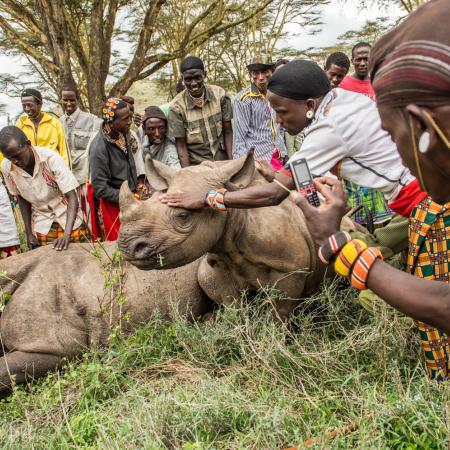
Rhinos Return to Samburu, northern Kenya
In 2014, Samburu ‘morans’ (warriors) from Sera Community Conservancy visited Lewa. The young morans were on a special trip - for many of them, this was going to be the first time to see rhinos, animals that were last spotted in their homeland over three decades ago, having been eradicated by poaching. While difficult to believe, for many in Kenya, there are few chances to see rhinos, mostly because they exist in heavily protected areas run by the government and private entities. A few months after the moran's trip, their community took a bold step. In partnership with the Northern Rangelands Trust, Lewa, the Kenya Wildlife Service and the Samburu county government, with financial and technical support from other entitities, they embarked on setting up the first community-managed and run rhino sanctuary in Kenya and East Africa.
Since the sanctuary was established in 2015, the rhinos are thriving and it has been a tremendous success. Led by an enigmatic chair lady, Pauline Longojine, for the people of Sera, having rhino back on their land has been more than symbolic. “This is the best way forward for our pastoralist community. To have wildlife and livestock side by side, we are so happy. We have been welcoming tourists to our sanctuary, which is providing vital income for our conservancy. It has also raised awareness of the black rhino.”
Lewa, in its role as a catalyst for conservation, and in supporting the preservation of the critically endangered black rhino, provided technical expertise in the establishment of the sanctuary - we helped to set up the infrastructure, trained rangers, and supported in fundraising. Today, Sera is an example of how a public-private-community partnership can be practiced successfully in conservation.
Sera also remains an example of a mindshift in modern conservation practices where a community has been enabled and empowered to protect a species under incredible threat, and in return, the community benefits from the opportunities conservation presents.

